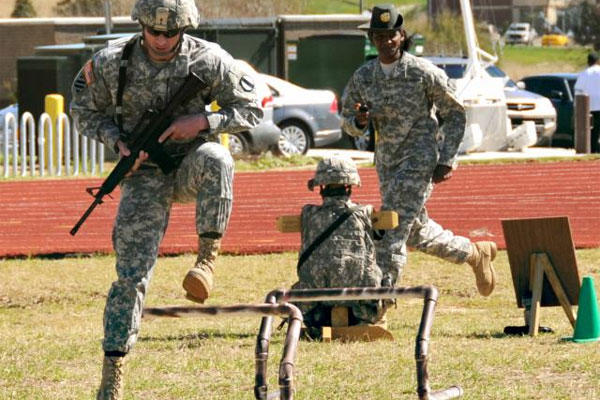This potential policy change of the Army PFT standards article was written in 2011. After testing the ACRT / APRT on more than 10,000 soldiers, TRADOC decided not to implement proposed changes and are still researching the data. The original Army Physical Fitness Test of pushups, situps, and 2 mile timed run is still being used by the entire Army until further notice.
For decades, the Army has assessed physical fitness through the standard fitness test that many branches of the military / law enforcement use: Pushups, sit-ups, 2 mile run (though most groups use the 1.5 mile run for cardio fitness test). Many have argued over the years that this test is not a good indicator of whether or not someone will be a good soldier. At best, the Army PFT is a Health and Fitness Test - not a job performance test. Now, after a decade of war, changes have been made to better equip today's soldier with the skills that will be used in combat.
Though the current APFT does not adequately measure strength, mobility, endurance, there is usefulness in standard PFT like the current Army Test. If you score the bare minimums on ANY fitness test, your chances of graduating or graduating without injury is very low. In some studies, graduation rates without injury are as low as 6%. However, coming closer to maxing the APFT leads to a far greater chance of graduation - up to 85% in some training programs. But, it fails to test a soldier's abilities that are similar to combat. The combat skills should be tested as having the ability of assessing these NEW exercises could save lives and give commanders a better understanding of their unit's combat readiness.
The proposed Army Physical Readiness Test (APRT) which is scheduled to be implemented later in 2011, expand from three events to five. These events are the following:

60-yard progressive shuttle run (5 yd, 10yd, and 15 yd round trips = 60yds)
one-minute rower (non-stop) - This is not a rowing machine exercise but a challenging core exercise that mimics the atomic situp with your legs off the floor.
standing long-jump - simply jump as far as you can forward pushing off the ground with both legs and landing on both feet.
one-minute push-up (non-stop) - just 1 minute of pushups, but do not stop to rest.
1.5 mile run - take off 1/2 mile off the 2 mile run and now you can pace it a bit faster than the older test.
These events will challenge and test a Soldier's anaerobic and aerobic endurance and will be assessed 1-2 times per year. The leadership is discussing if the APRT is tested once or twice annually along with the new ACRT once per year.
The Army Physical Fitness School Team of experts also created the Army Combat Readiness Test (ACRT). The ACRT consists of the following exercises:
1 - 400-meter run with a weapon
2 - Obstacle Course with low and high hurdles and crawling obstacles
3 - 40-yard casualty drag
4 - 40-yard run with ammo cans on a balance beam
5 - Sight picture drills with your weapon while moving through obstacles
6 - 100-yard ammo can shuttle sprint.
7 - 100-yard agility sprint
The Army as well as the Marine Corps have both created standard PFT that measure more than just health and fitness as well as combat related fitness tests that will assess a soldier's ability in events he/she will likely see again when defending our country in combat situations. The new changes account for both the health and wellness of our troops as well as their combat effectiveness.
The new APRT and ACRT Preparation Workout Book is available now!
Related Workout:
- Build Your Own Combat Conditioning Course - Make it Job Related!
Stew Smith is a former Navy SEAL and fitness author certified as a Strength and Conditioning Specialist (CSCS) with the National Strength and Conditioning Association. If you are interested in starting a workout program to create a healthy lifestyle - check out the Military.com Fitness eBook store and the Stew Smith article archive at Military.com. To contact Stew with your comments and questions, e-mail him at stew@stewsmith.com.



















